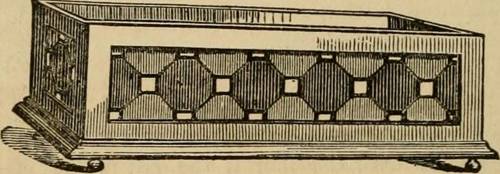
FAQ About Indoor Plant Soil Longevity Management

How can I tell if the soil for my indoor plants needs to be replaced?
Indoor plant soil may need replacing if there are signs like a sour smell, poor drainage, or white crusts on the surface indicating salt buildup. If plants show signs of poor health, such as stunted growth or leaf yellowing, this may suggest soil issues, necessitating replacement.

What are some methods to maintain the quality of indoor plant soil?
To maintain soil quality, regularly remove debris like fallen leaves, ensure effective drainage, and occasionally aerate the soil. Using organic fertilizers and compost can also enrich the soil, providing essential nutrients.

How often should I renew the soil for indoor plants?
Generally, it's advisable to renew indoor plant soil every 1-2 years. However, the frequency may vary based on the plant type, soil quality, and overall health of the plants, which can require more frequent changes.

What role does drainage play in soil longevity for indoor plants?
Proper drainage is crucial for preventing waterlogging, which can lead to root rot and other plant diseases. Using well-draining soil mixes and ensuring pots have drainage holes helps maintain soil health over time.

Is it necessary to sterilize soil before using it for indoor plants?
Soil sterilization can be beneficial as it reduces the risk of pests and diseases. This can be done by baking the soil at low temperatures in an oven or using commercial sterilizing methods.

Can reusing soil from another plant harm my current indoor plant?
Reused soil may contain pathogens or depleted nutrients, which can harm new plants. Refreshing the soil with added compost and checking for pests can help mitigate these risks.

What types of soil are best for indoor plants?
The best soil types for indoor plants are those that are well-aerated and retain moisture without becoming waterlogged. Peat-based potting mixes or those with added perlite or vermiculite are commonly used.

How can compost help improve indoor plant soil?
Compost adds organic matter, improves soil structure, boosts nutrient content, and enhances microbial activity in the soil. Regularly incorporating compost into your soil mix can significantly improve its quality and longevity.

Are there any natural additives that can enhance indoor plant soil?
Coffee grounds, eggshells, and banana peels can be used as natural soil enhancers. They add nutrients like potassium and calcium, which can benefit plant growth when used appropriately.

Why is soil aeration important for indoor plants?
Soil aeration prevents compaction, improving water infiltration and root growth. Aeration can be achieved by gently poking holes in the soil or by mixing in additives like perlite, which help maintain air spaces within the soil.

What is the impact of salt buildup on indoor plant soil?
Salt buildup, often seen as a white crust on the soil surface, can lead to nutrient imbalances and hinder water absorption by plant roots. Regularly flushing the soil with water can help mitigate salt buildup.

Can changing seasons affect indoor plant soil quality?
Yes, changes in temperature and humidity can affect indoor plant soil. During winter, decreased humidity and increased indoor heating can dry out soil faster, requiring adjustments in watering frequency.

How does plant size influence soil longevity in indoor settings?
Larger plants tend to deplete nutrients faster due to more extensive root systems. Consequently, the soil for bigger plants might require more frequent replenishment of nutrients or changing than that of smaller plants.

What are signs of nutrient depletion in indoor plant soil?
Signs of nutrient depletion include yellowing leaves, poor growth rate, and weaker plant vitality. Testing soil with nutrient kits can also determine if supplementation is necessary.

Can worms be beneficial for managing indoor plant soil?
Yes, small composting worms like red wigglers can help aerate and enrich indoor potting soil by breaking down organic matter and adding beneficial nutrients through their waste.

How can I prevent pests that come from indoor plant soil?
Regularly inspecting plants for signs of pests, such as fungus gnats or mites, and maintaining cleanliness around the plants can prevent infestations. Using sterilized soil and ensuring proper drainage also helps.

Is it okay to use garden soil for indoor plants?
Garden soil is usually too dense for indoor plants and lacks the necessary aeration and drainage. It's better to use a specially formulated potting mix designed for indoor plants.

What role do pH levels play in indoor plant soil management?
The pH level of soil affects nutrient availability to plants. Most indoor plants prefer a neutral to slightly acidic pH range. Regular testing and balancing with lime or sulfur can maintain optimal pH levels.

How can lighting conditions affect indoor plant soil?
Lighting influences plant growth and water evaporation rates. In low-light conditions, soil may retain moisture longer, increasing the need to monitor and adjust watering practices accordingly.

What are some sustainable practices for enhancing indoor plant soil?
Sustainable practices include using natural composts, organic fertilizers, and water-saving techniques like mulching. Incorporating these methods can improve soil health while reducing environmental impact.
